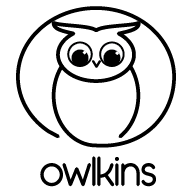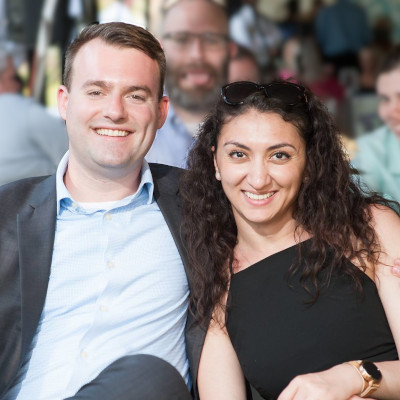Owlkins
After our daughter Claire was born, my wife and I became suddenly gifted with an array of vigilant instincts as many can attest to including Paul Graham. These days though, protection of your kids doesn't stop at the crosswalk but spills into the safety and security of their information online.
Growing up a part of the infamous millennial cohort, most of our information that predated our 18th
birthday wasn't persisted digitally in some corporation's database. “Free” social media platforms
didn’t become available until late in high school or afterwards, a point in adolescence where
you can better weigh the impacts of your decisions.1
1Humorously glossing over the impact of peer pressure for the scope of this discussion
Claire’s reality is very much different; born during a worldwide pandemic where "zoom" morphed from the sound her toy car makes to a verb concerning your co-worker's judgement of your bookshelf background, it's a different world for how information is shared and the lasting impacts that can make.
When holding newborn Claire for the first time, all of only 5 pounds and 3 ounces of her, the most acute sensation I can recall was the urge to protect her from anything and everything. That was when we quickly realized that there might be something to learn from the main storyline in the third season of Westworld (which was airing right around Claire’s birth); making conscious choices about protecting personal data can pay off. Forced into in a future full of uncertainty with how the use of this data will evolve, the costs of oversharing in the present can't yet be measured.
Realizing that there is a fine social line between the urge to wrap ourselves in our tin cocoons and still keep up with the digital sharing demands of modern families, we decided that our already tight circle of extended family and friends (all of them on COVID lockdowns with precluded ability to meet Claire anytime soon) deserved to have access to the one redeeming factor of the internet: on-demand access to photo and video content of our daughter’s progress. Still, we wanted to reserve the choice of sharing Claire's information on social media platforms for her to make later in her life. Who are we to predict where the big social media companies will take the space in her lifetime and what impact over-sharing before she could even understand or, let alone, consent to it, could have on her later in life.
The name Owlkins comes from what Claire’s mom decided would be her favorite animal--an owl. Put that together with Claire’s self soothing method of choice--her "thumbkin", and you’ve got Owlkins! The plural implies our hope of the platform’s use by multiple families for their kiddos.
The function of Owlkins began as a simple site for us to host a baby registry. Following the birth of Claire, the site grew with a renewed focus on sharing pictures and videos with family. From there, Owlkins expanded to also serve as a centralized repository for daily data tracking, dubbed as Claire’s Progress (the "data dashboard"). The need for this latter part became apparent after we decided to enlist the help of others in Claire’s childcare, including hiring a nanny. This use case drove much of the UX design concepts as well.
The benefits of the data dashboard feature turned out to be great. For one, the nanny needs to use nothing other than her phone to quickly and efficiently log information about Claire’s activities throughout the day. She can also see the current status at the time of handoff of Claire much easier than asking us (e.g., what time did she wake up and whether or not she has had breakfast). The parents can get real-time updates as the nanny had time to enter information on Claire’s activities from anywhere with an internet connection. Other benefits of tracking the data in this way included the ability to quickly provide her paediatrician with rather accurate information and trending graphs when describing how she's progressing.
Most importantly, with a basic understanding of information security, all of this data, while easily accessible to authorized users, has been kept rather private. No need to download a “free” app to handle your data for you at a cost buried in their privacy policy.
We have internalized all the costs, and so far, we feel that these costs are well justified. Moreover, they are minimal. To run Owlkins, we designed it such that the user pays for hosting and serving content, which depending on your setup is pretty minimal. When we started out, it was between $1 to $10 per month in CloudFront costs, but now free due to an increase in the free tier data transfer (up to the first 1TB) which should cover most Owlkins users. In terms of storing the photos and videos on S3, costs depend on your total storage (likely less than $1 per month for quite awhile). These costs don't account for hosting, which you might be able to do on some old hardware you have at home, or you could rent a VM from one of the cloud providers for a bit mroe per month. While not nothing, we feel the cost is well worth it compared to the unknown costs of other "free" services.
We have developed Owlkins to the best of our ability trying to optimize it as much as we can. Much of the input we’ve received has been from our users (family and friends). By open-sourcing it, we hope that not only others will find it useful, but can also share their ideas for improvement. Additionally, who knows what ideas you will have to improve and add to the current features! We hope to be a part of a whole community of families and parents striving to protect their kids’ personal data.

When you're a new parent, the last thing you need to do is worry about sending your data to whatever app shows up second in your app search. Set up your own site that you fully control.
Austin & Erna Owlkins developers & parents